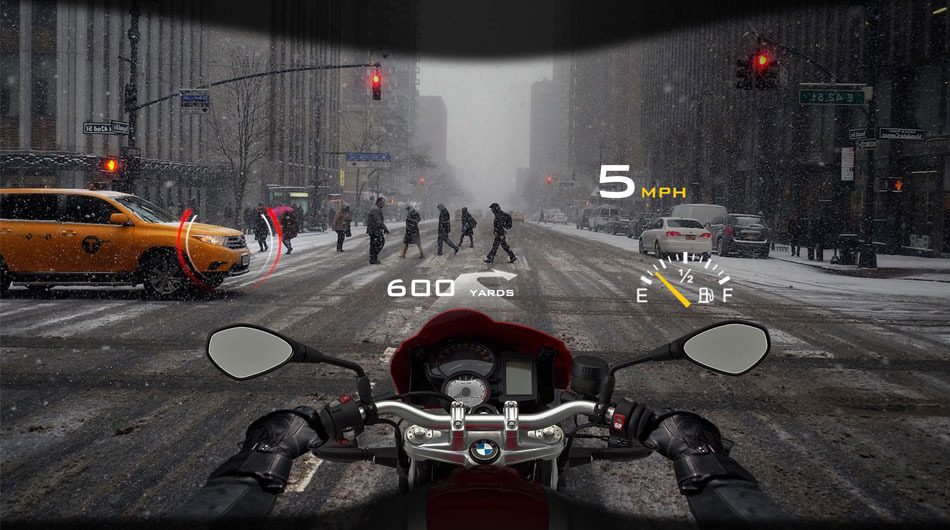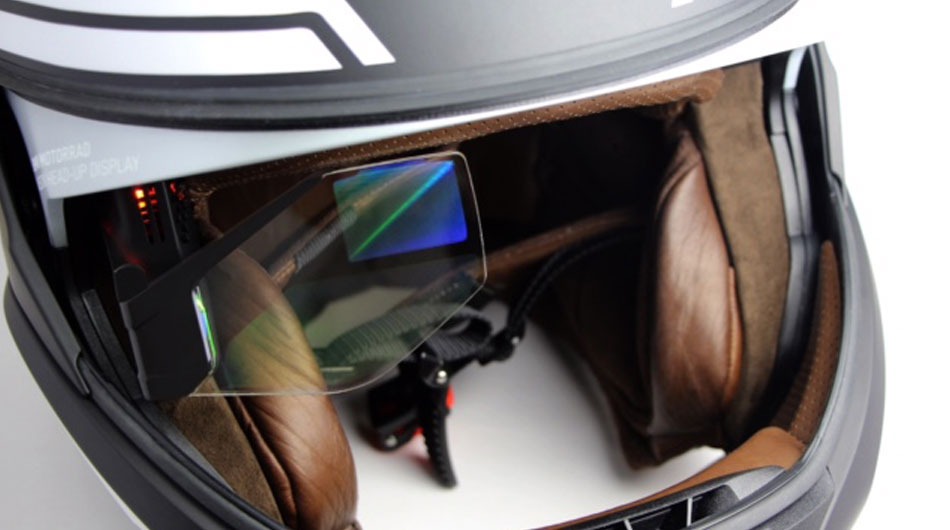Dubbed as the Google Glass for motorcycle helmets, a company called DigiLens unveiled an augmented reality (AR) tool that bikers will soon be able to use to navigate the road.
Announced at CES 2016, the technology was showcased using a real-life motorcycle simulator to demonstrate how it leverages AR to create an immersive, mixed-reality experience for the rider. With the DigiLens heads-up display (HUD), vital information is seen through a wide field-of-view waveguide optic, providing the rider with an enhanced field of vision without disrupting concentration on the road ahead. Because it’s lightweight, this new display, which combines clear transparency with a color information overlay, magnetically clips into the helmet, which is equipped with a tiny image generator.

The DigiLens' AR tool creates an immersive, mixed-reality view for motorcyclists. Image source: Mashable.
Positioned in front of the eye, the device delivers real-time updates on information such as traffic warnings, fuel usage, speed, and engine functions. Outside world data is streamed into the lens from a 360° view of traffic and road conditions near the biker.
“Beyond night vision, transportation, enterprise, and gaming, we believe we have the key AR display technology for hands-free wearable solutions like HUDs and eyeglasses-type solutions,” DigiLens’ founder and CEO, Jonathan Waldern, said in a press release. “This is the gateway device to enable a range of next generation mobile access and cloud services.”
According to the company, the software is written in Unity3D and based on its Qualcomm Snapdragon and Android platform. In addition to the operational data, the HUD displays turn indicators for pre-selected trips and offers on-demand playback of the helmet’s rear and front cameras.

With the DigiLens HUD, vital information is seen through a wide field-of-view waveguide optic. Image source: Mashable.
As with many tech-powered vehicular tools, it’s almost a guarantee that there will be concerns about distracted driving while using the helmet. It’s not difficult to imagine that a motorcyclist might get distracted by the information displayed on the lens during challenging driving situations. But since this area is new, it’s not easy to pin down how much risk might be involved.
“There is no law preventing a HUD in a helmet, but from a display standpoint there are strict laws requiring that a riders’ field of view is not obscured,” said Waldern. “Because it is so transparent, the DigiLens BMW HUD eyepiece meets these requirements. Just like in a BMW auto HUD, information design is carefully worked to be non-distractive and ergonomically correct.”
The helmet isn’t scheduled to be available until 2017, and currently a price has not yet been announced.
Advertisement
Learn more about Electronic Products Magazine





